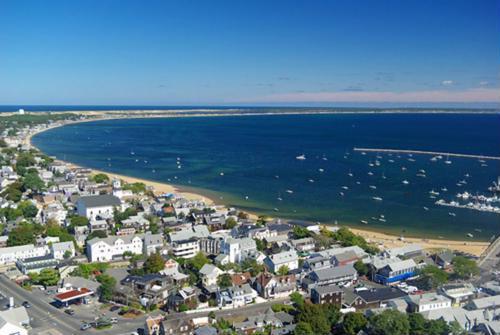Moving to a distant point of the country deserves careful planning. While far easier than heading to a new home in Alaska, Hawaii or Puerto Rico from the mainland U.S., a move to Cape Cod requires some special considerations to make it successful.
The appeal of moving to Cape Cod
Members of the Wapanoag nation inhabited Cape Cod for many hundreds of years before the first arrival of European settlers. As Encyclopedia Britannica pointed out, the Pilgrims first landed at Provincetown, at the very tip of the Cape, before making their way to Plymouth, across the Cape Cod Bay. Traditional industries include fishing, whaling and other ocean-based pursuits. Tourism is now a defining economic activity of the area, and a reason why many establish primary or secondary residences there.
The construction of the Cape Cod Canal in the early 1900s significantly shortened shipping distances between the major ports of Boston and New York City. However, it also limited access points between the Cape and mainland. Currently, only the Bourne and Sagamore Bridges are available for cars, with a similar rail link for trains.
The area experiences somewhat more mild winters and less-hot summers thanks to ocean currents, but can also be more exposed to major storms as they move off the ocean.

What you need to know about moving to Cape Cod
A move to Cape Cod can, in some ways, be very straightforward. The Bourne and Sagamore Bridges, while not particularly broad, support moving vans and trucks as they cross the canal. With a GPS device or map app on a smartphone, you can get to your new home and start unpacking.
However, there are some important considerations to make if you want to avoid being stuck in traffic, driving a large moving truck on a small, winding road and other issues unique to this region.
Moving, or not moving, during peak vacation season
As you might expect in an area focused on beaches, fresh seafood and outdoor activities, Cape Cod is most popular among tourists during the late spring, summer and fall. Holiday weekends, which can be an effective, if busy time to make a move in other parts of the country, bring some of the heaviest traffic to the Cape. Drivers can sit in traffic for exceptionally long periods of time.
Ideally, you should look to move in outside of the vacation season or schedule a move outside of Friday evenings and weekends during the summer, when the flow of short-term visitors can be heaviest. The time you save on sitting in traffic before and after crossing onto the Cape can easily make a mid-week or out-of-season move worth it. Just be wary of a move in the dead of winter, when a storm could strike.
Know your moving route
Cape Cod was settled long before cars existed. Because it predates grid road systems, has plenty of small changes in elevation and generally features limited space, many roads are noticeably narrow and winding. Additionally, rotaries - also called a traffic circle or roundabout in other parts of the country - are more common on the Cape than in many other areas. Carefully check your planned route for sharp turns and tight curves, and be sure you're comfortable navigating a rotary, especially if you're driving your own moving truck.
The experts can help
Driving onto Cape Cod in a moving truck can be a nerve-wracking experience, especially when you're facing a lot of traffic. If you want expert movers and packers to handle the navigation and heavy lifting, get in touch with Atlas. Your local agent can give you the support you need for a successful, low-stress move - just give them a call to learn more!

